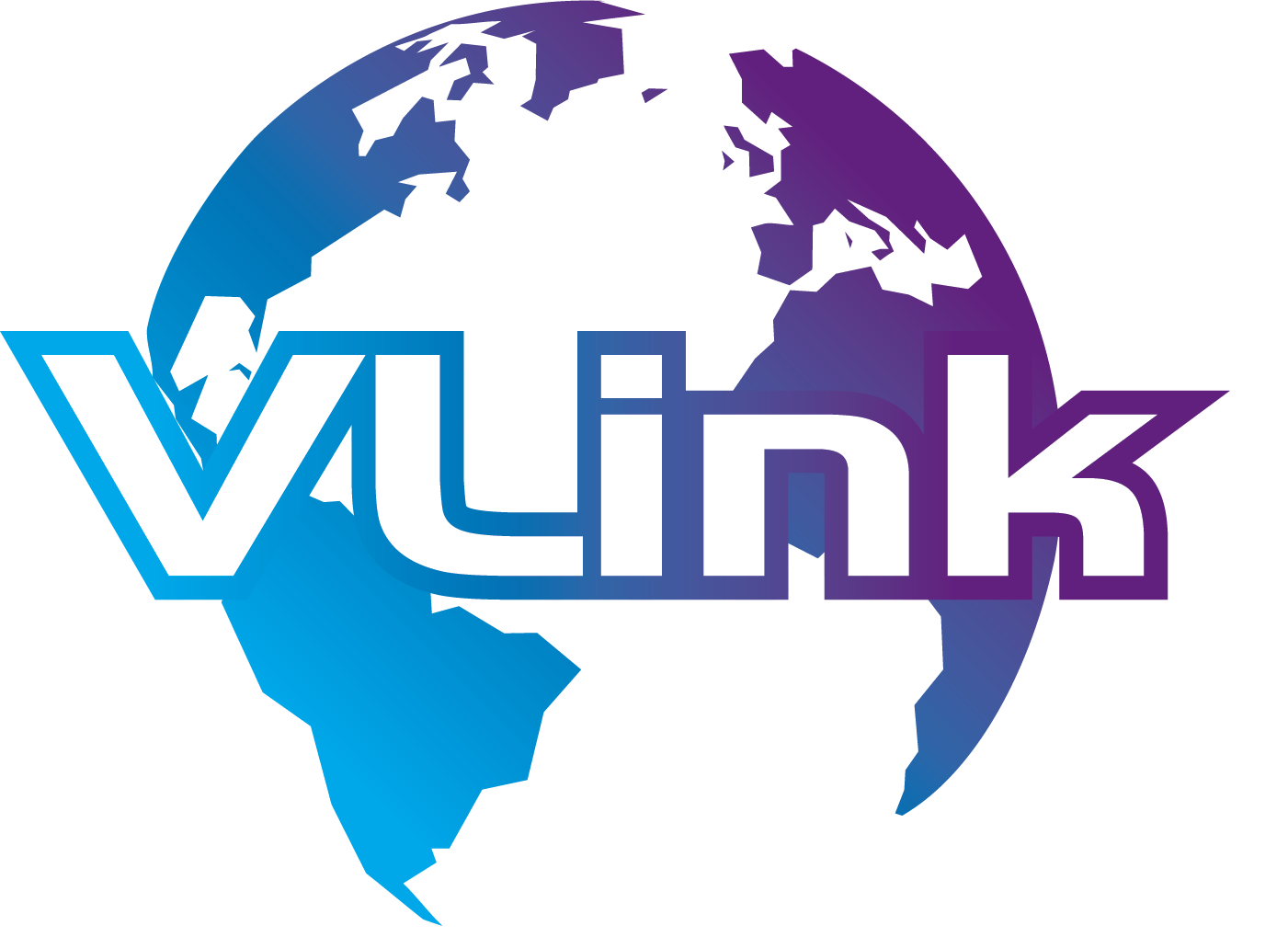The automotive industry is experiencing unprecedented transformation, driven by the rapid evolution of connected vehicles, autonomous driving, and the surge in electric mobility. This digital revolution demands a robust and adaptable IT infrastructure and agile development practices.
As a result, automotive companies, from established giants to nimble startups, are critically evaluating their IT strategies, particularly the fundamental choice between cloud-based and on-premises solutions.

For startup owners and CXOs in the automotive sector, understanding the intricate differences between cloud and on-premise is not just an option but a necessity for making informed decisions that align with their business objectives and drive future growth.
This comprehensive blog post delves into the critical aspects of cloud-based vs. on-premise IT infrastructure, specifically focusing on the unique needs of automotive IT. We will meticulously explore the pros and cons of cloud vs. on-premise and provide actionable insights into developing an effective DevOps consulting services strategy for automotive IT.
Let’s start!
On-Premises vs. Cloud: Difference - A Deeper Dive
The fundamental distinction between on-premises and cloud solutions lies in the location and management of the IT infrastructure.
On-Premises: The Legacy of Control
In an on-premises setup, the organization assumes complete ownership and control over all hardware and software resources. This includes servers, storage systems, networking equipment, databases, and applications, all housed within the organization's physical premises.
The organization is solely responsible for all aspects of infrastructure management, including installation, configuration, maintenance, security, upgrades, and troubleshooting. This model offers direct control and security but also involves significant capital expenditure and ongoing operational costs.
For organizations with stringent regulatory requirements or those handling highly sensitive data, on-premises solutions may offer a perceived sense of enhanced security.
Cloud: The Paradigm of Flexibility
Cloud computing involves delivering IT services over the Internet, eliminating the need for organizations to own and manage physical infrastructure. These services encompass many resources, including storage, servers, databases, networking, software, and analytics.
Cloud providers, such as AWS, Azure, and Google Cloud Platform, manage the underlying infrastructure, providing organizations with on-demand access to resources on a pay-as-you-go basis.
This model offers unparalleled scalability, flexibility, and cost-effectiveness, enabling organizations to adapt quickly to changing business needs. Cloud services' accessibility allows for remote work and increased collaboration.
Case Study: How Toyota Optimized Cloud Costs with DevOps
While specific details are often proprietary, publicly available information and industry trends suggest that Toyota, like many large enterprises, has embarked on a journey to optimize its cloud usage and costs by adopting DevOps practices.
This likely involves several key strategies:
- Infrastructure as Code (IaC): Automating the provisioning and management of cloud resources to eliminate manual errors and ensure consistent, cost-efficient deployments.
- Containerization and Orchestration (e.g., Docker and Kubernetes): Improving resource utilization and application portability, leading to better cost efficiency.
- Serverless Computing: Utilizing serverless functions for event-driven workloads, reducing idle compute costs.
- Continuous Monitoring and Optimization: Implementing robust monitoring tools to track resource consumption and identify areas for cost optimization, such as rightsizing instances and eliminating unused resources.
- Cost Visibility and Accountability: Implementing precise cost tracking and allocation mechanisms to provide teams with visibility into their cloud spending and encourage cost-conscious development practices.
- Automation of Scaling: Implementing auto-scaling policies to dynamically adjust resources based on demand, avoiding over-provisioning during low-traffic periods.
- FinOps Practices: Establishing a collaborative culture between finance, engineering, and operations teams to drive financial accountability and optimize cloud spending.
By embracing DevOps principles and focusing on automation, optimization, and cost visibility, companies like Toyota can significantly reduce cloud waste and maximize the value derived from their cloud investments.
Key Aspects Where You Can Find On-Premises vs. Cloud Differences
To truly grasp the nuanced comparison of cloud vs on-premises, it's crucial to examine the key aspects where they diverge:

Infrastructure Management: Responsibility and Control
- On-Premises: This requires a dedicated internal IT team with specialized skills for hardware procurement, installation, configuration, ongoing maintenance, software updates, patching, and troubleshooting, which necessitates significant investment in personnel and resources.
- Cloud: Cloud providers assume responsibility for the underlying infrastructure, including hardware, networking, and essential software maintenance. This allows internal IT resources to focus on strategic initiatives like application development, business process optimization, and innovation rather than routine maintenance.
Scalability: Adapting to Changing Demands
- On-Premises: Physical hardware limitations constrict scalability. Scaling requires significant upfront investment in additional servers, storage, and networking equipment, which can lead to over- or under-provisioning.
- Cloud: It offers dynamic and elastic scalability, allowing organizations to scale resources up or down instantly based on fluctuating demand. This ensures optimal resource utilization and cost efficiency, particularly during peak periods or rapid growth.
Cost: Capital Expenditure vs. Operational Expenditure
- On-Premises: On-premises infrastructure is characterized by substantial upfront Capital Expenditure (CapEx). This entails significant investments in physical hardware like servers, storage, and networking equipment, coupled with the acquisition of software licenses.
Additionally, organizations bear the costs associated with data center space, including real estate, construction, and ongoing maintenance. Operational expenses, such as power consumption, cooling, and the salaries of dedicated IT personnel, further contribute to the financial burden.
This heavy upfront investment can strain budgets, especially for startups and smaller enterprises, potentially limiting financial flexibility and the ability to invest in other critical areas. The hardware depreciation and the necessity for periodic upgrades compound long-term CapEx, making it less predictable and requiring careful financial planning. Crucially, the eventual need to replace aging hardware necessitates recurring large CapEx events.
- Cloud: Cloud computing fundamentally shifts the cost model to Operational Expenditure (OpEx). Organizations pay for resources on a subscription or pay-as-you-go basis, eliminating the need for large upfront investments. This OpEx model facilitates greater financial predictability, as costs are directly tied to actual usage and can be accurately forecasted. The reduced upfront investment liberates capital for other strategic initiatives like research and development, marketing, or business expansion.
Cloud providers handle infrastructure maintenance, upgrades, and security, reducing operational overhead and freeing internal IT resources. The flexibility inherent in cloud services allows for dynamic budgeting, with costs scaling up or down according to business needs.
The on-demand scalability prevents over-provisioning, ensuring organizations only pay for utilized resources, optimizing cost efficiency, and improving cash flow management. However, it is essential to plan for potential data transfer costs, as they can become unexpected expenses.
Security: Balancing Control and Responsibility
- On-Premises: Organizations have direct control over security measures, but they are also solely responsible for implementing, maintaining, and updating them. This includes physical security, network security, data encryption, and compliance with relevant regulations.
- Cloud: Cloud providers invest heavily in robust security infrastructure and employ advanced security measures. However, organizations remain responsible for data security, access control, and compliance within their cloud environment. Shared responsibility models are ubiquitous.
Accessibility: Anywhere, Anytime Access
- On-Premises: Access is typically limited to the physical network, restricting remote access and collaboration. This can hinder productivity and agility, particularly in today's increasingly distributed workforce.
- Cloud: Provides ubiquitous access to data and applications from anywhere with an internet connection, enabling remote work, seamless collaboration, and enhanced business continuity.
Maintenance: Burden vs. Shared Responsibility
- On-Premises: This requires a dedicated IT team to handle all aspects of maintenance, including hardware repairs, software updates, patching, and troubleshooting. This can be time-consuming and resource-intensive.
- Cloud: Cloud providers handle infrastructure maintenance, freeing up internal IT teams to focus on strategic initiatives. This reduces operational overhead and improves efficiency.
Deployment Speed: Time to Market
- On-Premises: Deployments are typically slower due to hardware procurement, configuration, and software installation. This can delay time to market and hinder competitiveness.
- Cloud: Cloud deployments are significantly faster, with resources provisioned on demand. This enables organizations to rapidly deploy new applications and services, accelerate innovation, and gain a competitive edge.
Disaster Recovery:
- On-Premises: The company must build and maintain disaster recovery. This requires redundant hardware, offsite backups, and a well-documented plan.
- Cloud: Cloud Providers offer robust disaster recovery and business continuity options, including data replication, automated backups, and failover capabilities.
Compliance:
- On-Premises: The company is fully responsible for all regulatory compliance, which can be difficult and expensive depending on the industry.
- Cloud: Cloud providers often have compliance certifications, but the company is responsible for ensuring that the applications and data it places in the cloud follow all required compliance policies.
Summary Table: On-Premises vs. Cloud Differences
| Feature | On-Premises | Cloud |
| Infrastructure Management | Internal IT team | Cloud provider |
| Scalability | Limited, requires hardware investment | Dynamic, on-demand |
| Cost | High upfront (CAPEX) | Pay-as-you-go (OPEX) |
| Security | Organization controlled | Shared responsibility |
| Accessibility | Limited to the physical network | Anywhere, anytime |
| Maintenance | Organization responsibility | Cloud provider responsibility |
| Deployment Speed | Slower | Faster |
| Disaster Recovery | Organization responsibility | Provider options available |
| Compliance | Organization responsibility | Shared responsibility |
Pros and Cons of On-Premises Solutions - A Balanced Perspective
Understanding the pros and cons of on-premises solutions is vital for making an informed decision.
Pros:
- Enhanced Control: Organizations ultimately control their infrastructure, data, and security measures.
- Perceived Security: Some organizations perceive greater security due to physical control over their infrastructure.
- Regulatory Compliance: Certain industries with strict compliance requirements may prefer on-premises solutions to maintain control over data.
- Customization: Greater ability to customize hardware and software to meet specific needs.
Cons:
- High Upfront Costs: Significant capital expenditure for hardware, software, and infrastructure setup.
- Limited Scalability: It is challenging to scale resources quickly and efficiently.
- Maintenance Burden: Requires a dedicated IT team for ongoing maintenance, upgrades, and troubleshooting.
- Accessibility Limitations: Access is restricted to the physical network, hindering remote work and collaboration.
- Higher Long-Term Cost: Due to the cost of maintenance and upgrades, the cloud vs. on-premise cost comparison may favor the cloud for long-term savings.
Pros and Cons of Cloud Solutions - A Comprehensive Analysis
Evaluating the pros and cons of cloud solutions is equally important.
Pros:
- Scalability and Flexibility: Easily scale resources up or down based on demand, adapting to changing business needs.
- Cost-Effectiveness: The pay-as-you-go model reduces upfront costs and shifts expenditure from capex vs opex.
- Accessibility and Collaboration: With an internet connection, you can access data and applications from anywhere, enabling remote work and seamless collaboration.
- Reduced Maintenance: Cloud providers handle infrastructure maintenance, freeing internal IT resources.
- Faster Deployment: Deploy applications and services quickly, accelerating time to market.
- Innovation and Agility: Access to cutting-edge technologies and services, fostering innovation and agility. The pros of cloud in devops are numerous.
- Disaster Recovery and Business Continuity: Robust disaster recovery and backup capabilities ensure business continuity.
Cons:
- Security Concerns: Some organizations have data security and privacy concerns, which require careful evaluation of cloud provider security measures.
- Vendor Lock-in: Potential dependency on a single cloud provider, limiting flexibility.
- Internet Dependency: Requires a stable and reliable internet connection.
- Control Limitations: Less direct control over infrastructure compared to on-premises solutions.
Hybrid Cloud Strategies for Managing Manufacturing & Vehicle Software
The hybrid cloud model presents a compelling solution for the unique demands of automotive manufacturing and vehicle software development.
- Manufacturing: Sensitive operational technology (OT) data, real-time control systems, and intellectual property related to manufacturing processes can be kept securely on-premises. Simultaneously, cloud resources can be leveraged for demand forecasting, supply chain optimization, predictive maintenance analytics, and collaborative design platforms. This allows manufacturers to benefit from cloud scalability and advanced analytics without compromising their core operations' security and latency requirements.
- Vehicle Software: Critical, real-time vehicle control systems and highly sensitive user data might reside on-premises or in a private cloud for maximum security and low latency. However, the cloud can be invaluable for developing and deploying infotainment systems, connected car services, OTA update management platforms, and large-scale data analytics for vehicle performance and user behavior.
A hybrid approach enables faster iteration and deployment of customer-facing features while maintaining the integrity and security of core vehicle functions.
Choosing the Right DevOps Strategy for your Automotive IT
For Automotive IT, the decision between cloud vs on-premise for Automotive IT is pivotal. Here's a strategic framework to guide your choice:

- Assess Business Needs: Understand your organization's specific requirements, including scalability, security, compliance, performance, and cost.
- Evaluate Existing Infrastructure: Analyze your current IT infrastructure, identify strengths and weaknesses, and determine areas for improvement.
- Conduct a Thorough Cost Analysis: Conduct a detailed cloud vs. on-premise cost comparison to determine the most cost-effective solution for your organization.
- Prioritize Security and Compliance: Ensure the chosen solution meets your security and compliance requirements, particularly in the automotive industry, which handles sensitive data.
- Plan for Scalability and Flexibility: Select a solution that can scale with your business growth and adapt to changing market demands.
- Evaluate DevOps Needs and Integration: How will your development and operations teams interact with the environment, and how will DevOps practices be implemented?
- Consider Hybrid Cloud and Multi-Cloud Strategies: Hybrid cloud is becoming increasingly important, leveraging the best of both worlds, and multi-cloud strategies offer increased resilience.
- Seek Cloud Strategy Consulting Expertise: Engaging with cloud strategy consulting services can provide valuable insights and guidance.
- Leverage Cloud Application Consulting Services: Consider cloud application consulting services for application deployment and optimization.
- Partner with an Ideal IT Consulting Firm: Partnering with an ideal IT consulting firm or devops consulting services can simplify the process and provide expert guidance.
Best DevOps Practices for Automotive IT
Effective DevOps practices are crucial for success in Automotive IT, regardless of the chosen infrastructure.

- Continuous Integration/Continuous Delivery (CI/CD): Automate the software development lifecycle for faster, more reliable, and more frequent releases.
- Infrastructure as Code (IaC): Manage infrastructure using code for consistency, repeatability, and version control.
- Microservices Architecture: Break down applications into more minor, independent services for easier development, deployment, and scalability.
- Containerization and Orchestration: Use containers like Docker and orchestration tools like Kubernetes for consistent application deployment and management across environments.
- Automation of Repetitive Tasks: Automate repetitive tasks to improve efficiency, reduce errors, and free up developers for strategic initiatives.
- Monitoring and Logging: Implement robust systems for proactive issue detection, performance optimization, and security analysis.
- Collaboration and Communication: Foster a culture of collaboration and communication between development and operations teams.
- Security Automation and Integration: Integrate security into the DevOps pipeline, automating security testing and vulnerability management.
- Agile Methodologies and Iterative Development: Embrace agile methodologies for iterative development, continuous feedback, and rapid adaptation.
- Feedback Loops and Continuous Improvement: Implement feedback loops to improve processes, identify bottlenecks, and optimize performance continuously.
Future of DevOps Strategy for Automotive IT
Several key trends will shape the future of DevOps strategy for Automotive IT:

- Edge Computing and Real-Time Data Processing: Processing data closer to the source for real-time applications, such as autonomous driving and connected vehicle services.
- AI and Machine Learning for Automation and Optimization: Automating tasks, improving decision-making, and optimizing performance using AI and machine learning.
- Serverless Computing and Function as a Service (FaaS): Building and running applications without managing servers, reducing infrastructure overhead, and improving scalability.
- 5G Connectivity and Enhanced Data Transfer: Enabling faster and more reliable data transfer, supporting real-time applications and connected vehicle services.
- Cybersecurity and Data Protection: Enhanced security measures to protect against evolving threats, ensuring data privacy and security.
- Hybrid and Multi-Cloud Strategies for Workload Optimization: Optimizing workloads across multiple cloud environments and on-premises infrastructure for performance, cost, and resilience.
- Software-Defined Vehicles and Increased Software Complexity: Increased software complexity in vehicles requires robust DevOps strategies for continuous integration, testing, and deployment.
- Data-Driven Development and Continuous Improvement: Using data to drive development decisions, optimize performance, and improve user experience.
- Automated Testing and Validation for Faster Releases: Increased use of automation testing and validation for faster releases, improved quality, and reduced time to market.
Choose VLink to Accelerate Automotive Cloud Migration
In the fast-paced world of Automotive IT, successful cloud deployment demands a strategic partner. VLink’s expertise in cloud strategy consulting offers specialized services tailored to accelerate your transformation and deliver real business results. We understand the automotive industry's unique needs and provide end-to-end cloud deployment, from strategic planning to ongoing management.
Our approach prioritizes seamless migration, cost optimization, and robust security. We integrate DevOps practices and offer dedicated support, ensuring a smooth transition and maximizing your cloud investment. Partnering with VLink expertise brings benefits like faster time to market, reduced costs, and enhanced security, empowering you to drive innovation in your automotive IT.
Our expertise translates to streamlined operations, allowing your team to focus on core automotive development. Our dedicated team ensures your cloud infrastructure is agile, scalable, and secure, adapting to the dynamic demands of the automotive sector. We are committed to providing transparent and efficient cloud solutions, acting as a trusted extension of your team.
Conclusion
Choosing the right IT infrastructure and DevOps strategy is critical for the success of automotive IT. Whether you opt for on-premises, cloud, or a hybrid approach, understanding the advantages of cloud vs. on-premises and the associated cost of cloud vs. on-premises is essential.
By carefully evaluating your business needs, prioritizing security, embracing automation, and implementing best practices, you can build a robust and agile IT environment that supports your organization's growth and innovation.
Remember to seek the expertise of a trusted ideal IT consulting firm or devops consulting services to guide you. By leveraging the benefits of cloud computing or maintaining crucial on-premise systems, your automotive company can stay competitive in the rapidly evolving automotive landscape.
Ready to optimize your Automotive IT strategy and navigate the complexities of cloud vs. on-premises solutions? Contact Us Now! Our team of expert consultants is here to help. We offer comprehensive cloud strategy consulting, cloud application consulting, and DevOps consulting services tailored to the industry's unique needs.










 Shivisha Patel
Shivisha Patel
















